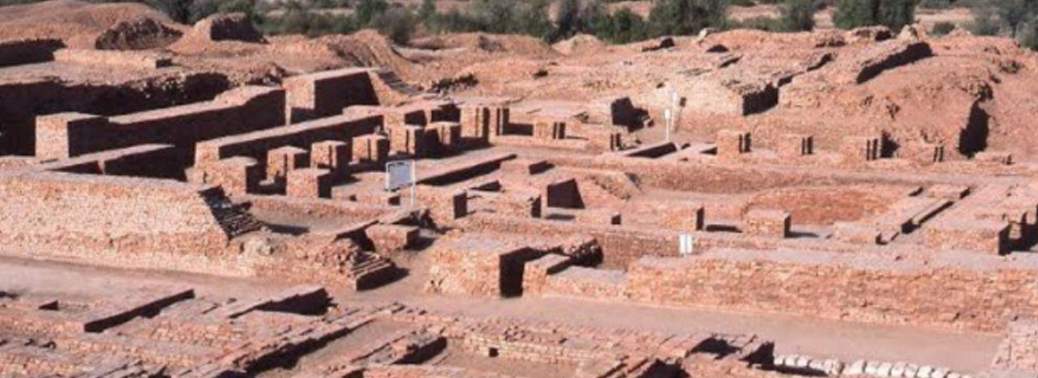RAKHIGARHI AND FOUR OTHER SITES TO BE DEVELOPED AS ICONIC SITES
04, Feb 2020

Prelims level : History - Ancient History
Mains level : GS-I Indian culture will cover the salient aspects of Art Forms, Literature and Architecture from Ancient to Modern Times.
Why in News?
- Union Budget (2020-21) has proposed to develop Rakhigarhi (Hisar District,Haryana) and 4 other archaeological sites in Hastinapur (Uttar Pradesh), Shivsagar (Assam), Dholavira (Gujarat) and Adichanallur in (Tamil Nadu) as iconic sites with Onsite Museums.
1. About Rakhigarhi:
- Rakhigarhi is the largest Harappan site in the Indian subcontinent.
- Other large sites of Harappan civilization on Indian sub-continent are Harappa, Mohenjodaro and Ganveriwala in Pakistan and Dholavira (Gujarat) in India.
- At Rakhigarhi, the excavations are being done to trace its beginnings and to study its gradual evolution from 6000 BCE (Pre-Harappan phase) to 2500 BCE.
- The site was excavated by Amarendra Nath of ASI.
Recent Findings:
- Recently, a study of DNA from skeletal remains excavated from the Harappan cemetery at Rakhigarhi found that the people in the Harappan Civilization have an independent origin.
- This study negates the theory of the Harappans having Steppe pastoral or ancient Iranian farmer ancestry.
2. About Hastinapur:
- Hastinapur is a city in the Meerut district of the Indian state of Uttar Pradesh.
- Described in Hindu texts (Mahabharata and Puranas) as the capital of Kuru Kingdom, the city also finds its mention in the ancient Jain texts.
3. About Shivsagar:
- Sivasagar (“the ocean of Shiva”) is a city in the state of Assam, India.
- The city gets its name from the big lake, Sivasagar, situated in the heart of the city.
- The lake was commissioned by the Ahom king Siva Singha.
- This city is surrounded by the Dehing rainforest, where the Dihing (Brahmaputra) and Lohit rivers meet.
4. About Dholovira
- Dholavira is located in Rann of Katch of Gujarat.
- It is the fifth largest of eight major Harappan sites.
- The site was discovered in 1967-68 by J. P. Joshi, of the Archaeological Survey of India (ASI).






